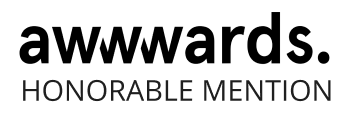Pay-Per-Click (PPC) advertising is a dynamic and powerful digital marketing tool that can yield impressive results when executed correctly. To make the most of your PPC campaigns on platforms such as Google Ads or Meta Ads and achieve a maximum return on investment (ROI), you need a strategic approach.
In this article, we’ll delve into ten actionable tips and strategies that will help you optimize your PPC advertising efforts.
PPC Advertising: Why it Matters and How to Make It Work
Before we dive into the tips, let’s briefly explore why PPC advertising is a vital component of your online marketing strategy.
PPC advertising allows you to display ads to a highly targeted audience, ensuring that your message reaches those who are actively searching for products or services like yours. You only pay when someone clicks on your ad, making it a cost-effective way to drive traffic, conversions, and revenue.
1. Conduct Thorough Keyword Research
Keyword research is the foundation of any successful PPC campaign. Identify relevant keywords that align with your products or services. Use tools like Google’s Keyword Planner or third-party platforms to uncover high-performing keywords and long-tail variations.
Remember to consider:
- – Search volume: Choose keywords with a sufficient number of searches to reach your target audience.
- – Relevance: Ensure that your keywords closely relate to your ad copy and landing page content.
- – Competition: Balance competitive keywords with less competitive ones to optimize your budget.
2. Craft Compelling Ad Copy
Your ad copy is your chance to make a compelling impression on potential customers. Create ad copy that is concise, persuasive, and aligned with the user’s search intent. Focus on the unique value propositions of your product or service.
Key elements of effective ad copy include:
- – Clear and relevant headlines.
- – Concise descriptions of benefits.
- – Strong calls to action (CTAs).
- – Utilizing ad extensions for additional information.
-
3. Optimize Landing Pages
Once users click on your ad, their experience on your landing page is crucial. Ensure that your landing pages are optimized for conversion. Elements to consider include:
- Fast loading times: Slow pages can lead to high bounce rates.
- Mobile-friendliness: Ensure a seamless experience on both desktop and mobile devices.
- Relevant content: Match the landing page content to the ad’s promise.
- Clear CTAs: Encourage visitors to take action, whether it’s making a purchase or filling out a form.
4. Set Realistic Budgets
To maximize ROI, it’s essential to set realistic and data-driven budget limits for your PPC campaigns. Monitor the performance of your campaigns and allocate more budget to those that yield better results.
Consider using features like:
- – Google’s Budget Pacing: Automatically adjusts your daily budget to optimize spend throughout the day.
- – Bid strategies: Utilize automated bidding strategies to optimize for conversions or other objectives within your budget.
5. Implement Ad Scheduling
Not all hours of the day are equal in terms of user activity and conversions. Use ad scheduling to show your ads during specific times when your target audience is most active or likely to convert. This allows you to make the most of your budget by avoiding low-conversion hours.
6. Negative Keywords are Your Allies
Negative keywords are often overlooked but play a significant role in filtering out irrelevant traffic. Identify and add negative keywords to your campaign to prevent your ads from appearing for searches that aren’t relevant to your offerings. This can help reduce wasted spend and improve your ROI.
7. Leverage Ad Extensions
Ad extensions provide additional information to potential customers and can boost the performance of your ads. Utilize various ad extensions, such as site link, callout, and structured snippet extensions, to provide more context and encourage clicks.
8. Monitor, Test, and Refine
PPC advertising is not a set-it-and-forget-it strategy. Continuously monitor the performance of your campaigns, test different elements (like ad copy, keywords, and landing pages), and make data-driven adjustments to improve ROI.
Key metrics to watch include:
- – Click-through rate (CTR).
- – Conversion rate.
- – Quality score.
- – Cost per conversion.
- – Return on ad spend (ROAS).
9. Utilize Remarketing
Remarketing allows you to re-engage with users who have previously interacted with your website or ads. Create tailored ads for this audience to encourage them to return and complete a desired action, such as making a purchase or filling out a form. Remarketing often yields higher conversion rates and can boost ROI.
10. Stay Informed and Adapt
The digital advertising landscape is constantly evolving, with new features and trends emerging regularly. Stay informed about industry updates, algorithm changes, and best practices to adapt your PPC strategies accordingly.
Consider joining forums, attending webinars, and subscribing to industry newsletters to stay ahead of the curve.
Prepare your PPC campaigns and start implementing it
PPC advertising offers a powerful means of reaching your target audience and generating ROI, but it requires careful planning and execution. To get the best return on investment, it’s best to leave PPC advertising campaigns to experienced professionals.
Effective PPC tips are essential to achieving the best ROI possible, and these strategies will help you make the most of your advertising budget. Remember that ongoing optimization and adaptation are key to sustaining and improving your ROI over time. Start implementing these tips today with Brief’s help and watch your PPC campaigns soar to new heights.






